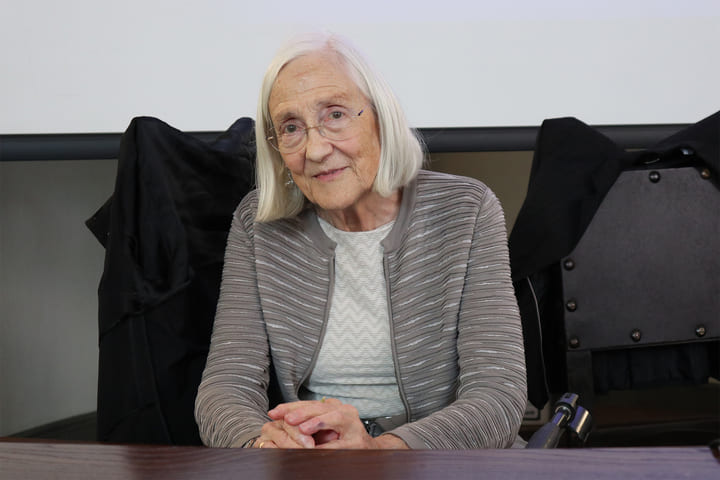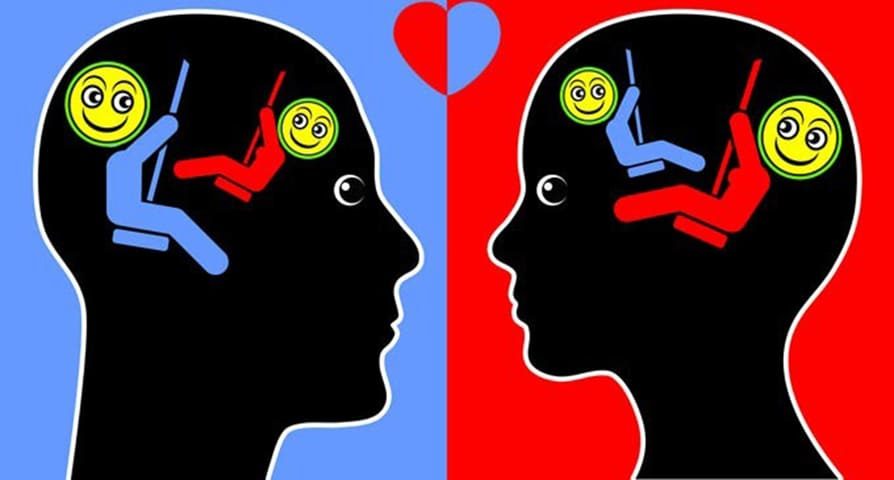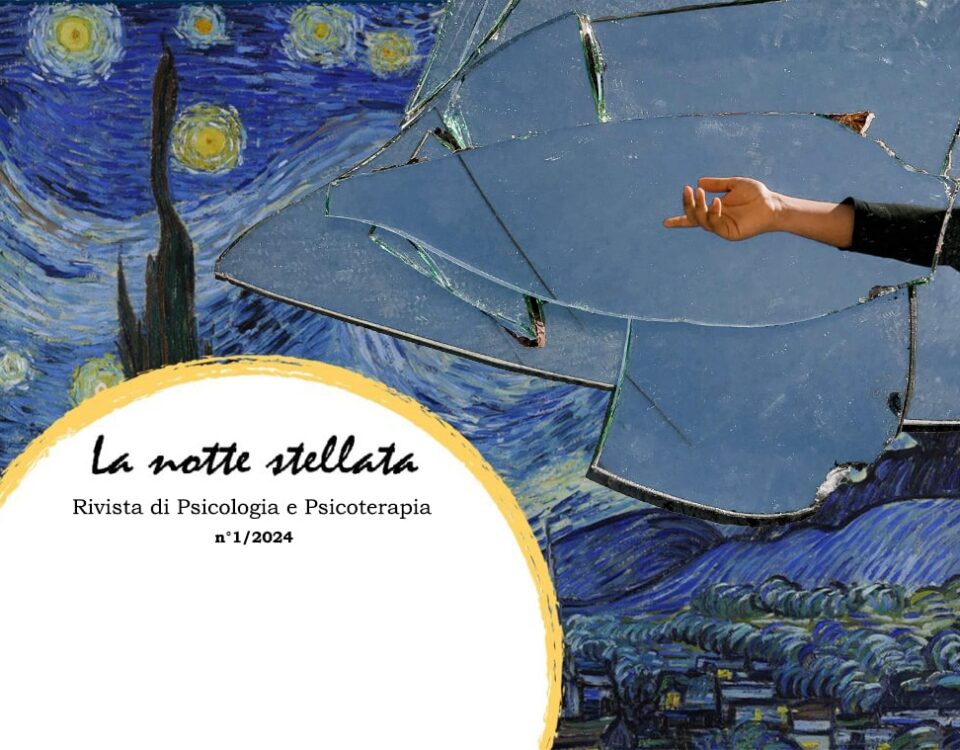
Non c’è mai un posto dove tu possa riposare.

L’Aquila, Anno X.
La notte stellata. Rivista di psicologia e psicoterapia n° 2/2019 – ARGOMENTI DI PSICOTERAPIA – pag 38 – 51
L’empatia come strumento terapeutico.
Francesco Colacicco*
Abstract
I neuroni specchio, quei neuroni che compiono la trasformazione dell’azione da un formato sensoriale a uno motorio, rappresentano un sistema comunicativo innato: le azioni compiute da un individuo diventano messaggi che l’osservatore comprende senza che vi sia alcun accordo preliminare tra i due soggetti. Sappiamo anche che esistono risposte mirror nel dominio delle emozioni e delle forme vitali (Stern, Rizzolati ed al.).
Daniel Stern sostiene che in ogni gesto che compiamo viene veicolato un affetto vitale. Gli affetti vitali non sono propriamente delle emozioni in senso tradizionale quanto piuttosto le modalità con cui un sentimento viene vissuto o sentito. Sono un vero e proprio sistema comunicativo, naturale, spontaneo e chiaro. Qualificano il messaggio su cosa facciamo.
Si tratta di un sistema di comprensione che avviene dall’interno: percepire un’azione non semplicemente come una sequenza di movimenti equivale a simularla internamente e a vivere l’altro come un altro sé. Questo vuol dire che alla base dell’empatia ci sono il rispecchiamento e la simulazione e che quest’ultima può essere considerata come il correlato funzionale dell’empatia. L’empatia non nasce perciò da uno sforzo intellettuale ma è parte del corredo genetico della specie.
Ovviamente la scoperta dei neuroni specchio genera interessanti implicazioni per le teorie e le pratiche psicoterapeutiche. Nell’articolo l’autore cita a questo proposito i contributi di Kout, Sullivan, Rogers, Fonagy, Bowlby e Benjamin e spiega come l’empatia sia un fondamentale strumento terapeutico: l’empatia è una forma di introspezione e come tale è uno strumento che può essere utilizzato in maniera professionale ed al quale il terapista può essere addestrato. Rappresenta una vera e propria tecnica terapeutica che consente al terapeuta di lavorare attraverso l’elaborazione delle emozioni provenienti dal paziente.
L’empatia (il suo uso) viene poi analizzata nel contesto terapeutico della terapia familiare. Lavorando con la famiglia l’empatia consente di attivare sia le risorse del paziente che quelle della sua famiglia, attivando l’intero gruppo familiare nella ricerca della soluzione dei problemi. Secondo questa prospettiva il terapeuta non è un osservatore neutro, esterno e distaccato, ma partecipe ed attivo. Fa parte del sistema e deve imparare a servirsi delle proprie reazioni emotive.
Scarica la versione completa dell’articolo
Abstract
Mirror neurons, the neurons that perform the transformation of the action from a sensory format to a motor, represent an innate communicative system: the actions carried out by an individual become messages that the observer understands without any preliminary agreement between the two subjects. We also know that we find mirror answers in the domain of emotions and vital forms (Stern, Rizzolati and others).
Daniel Stern maintains that a vital affection is conveyed in every gesture we make. Vital affects are not really emotions in the traditional sense, they rather are the ways whereby a feeling is experienced or felt. They are a communicative system, natural, spontaneous and clear. They qualify the message about what we do.
This is a system of understanding that comes from within: perceiving an action not simply as a sequence of movements is equivalent to simulate it internally (embodied simulation) and living the other as another self. This means that the basis of empathy are mirroring and simulation, and the latter can be activated as the functional correlation of empathy. Therefore, empathy is not born by an intellectual effort but is part of the genetic make-up of the species.
Obviously, the discovery of mirror neurons induces interesting implications for psychotherapeutic theories and practices. In the article, the author quotes in this regard the contributions of Kout, Sullivan, Rogers, Fonagy, Bowlby and Benjamin and he explains how empathy is a fundamental therapeutic tool: empathy is a form of introspection and as such is a tool that can be used in a professional manner and the therapist can be trained to. It represents a real therapeutic technique that allows the therapist to work processing the emotions coming from the patient.
Empathy (its use) is then analysed in the therapeutic context of family therapy. Working with a family, empathy allows to activate resources of the patient and his family both, activating the entire family group to find a solution for the problems. According to this perspective, the therapist is not a neutral, external and distant observer, but he is participant and active. He is part of the system and must learn to use its own emotional reactions.
For this reason, the emotions of the therapist must be considered as indicators of the way in which he participates to the construction of the therapeutic relationship through his maps, beliefs and meaning systems. This way of conceiving and defining the therapist emotions is associated with the concept of countertransference. Initially the countertransference was considered a hindrance to therapy and a long controversy was developed about its definition; today it is widely agreed that it refers to the emotional responses raised in the analyst by specific aspects of the patient.
Empathy always poses a question of dosage. When it is badly dosed or misdirected it does not allow the right emotional tuning between the therapist and the patient. Systemic relational therapists tend to work in pairs or in team, precisely to avoid the excessive involvement of the therapist with the family.
Note
* Dott. Francesco Colacicco, didatta del Centro Studi di Terapia Familiare e Relazionale, Direttore Istituto Dedalus di Roma, Scuola di specializzazione in psicoterapia sistemico e relazionale, nonché direttore scientifico di questa rivista.
© RIPRODUZIONE RISERVATA




